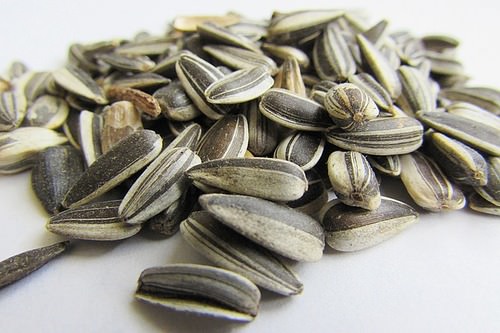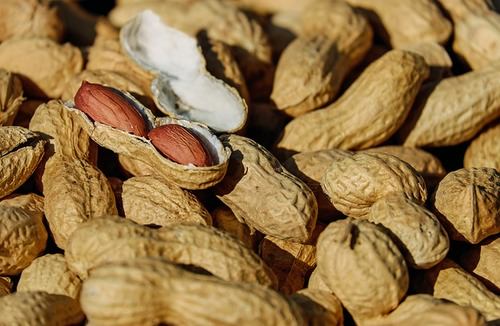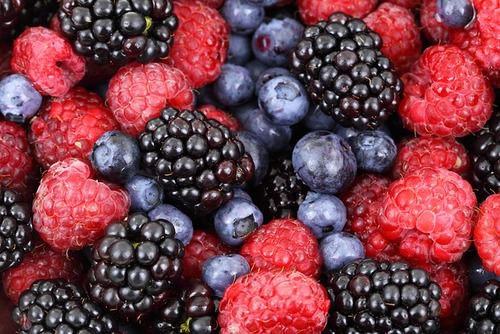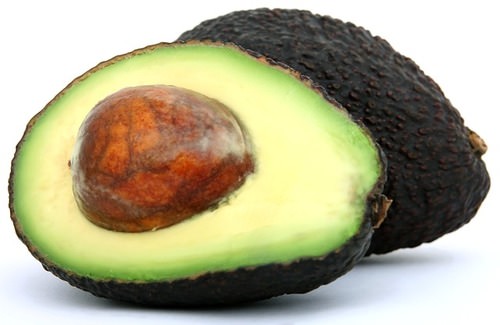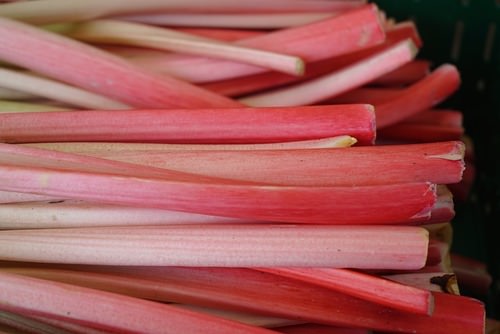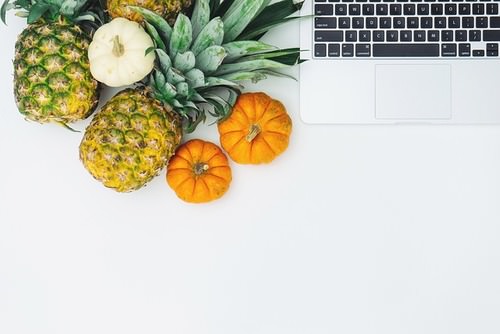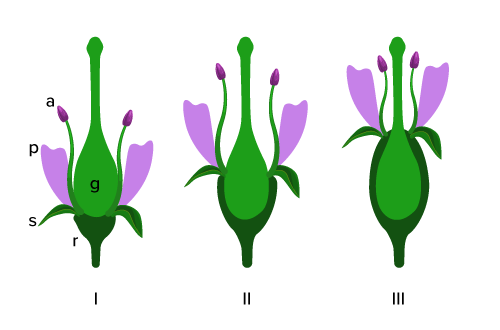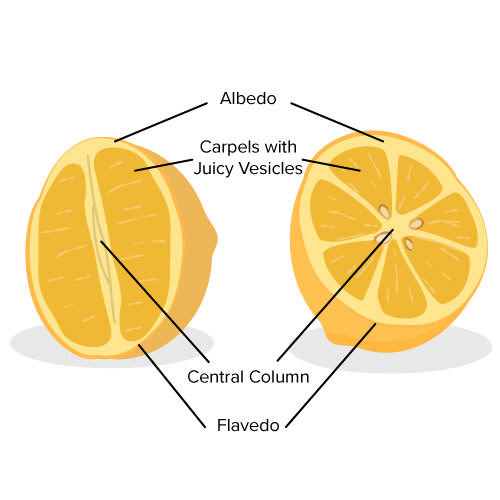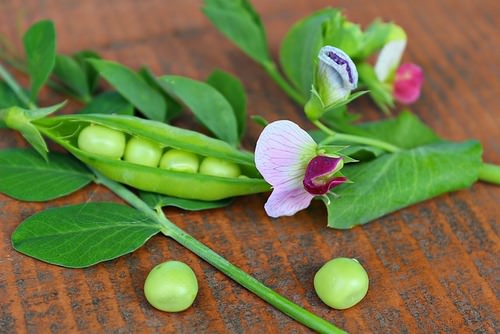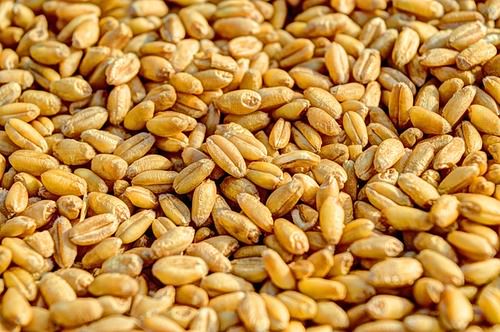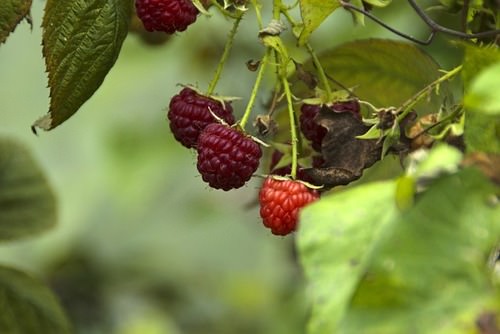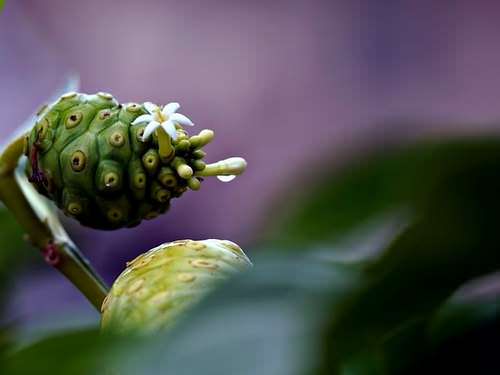13.47 鲜花植物的水果 -- -- 高级
章节大纲
-
Fruits and Seeds of Flowering Plants
::鲜花植物的水果和种子Tomatoes, squash, pumpkin, cucumber, peas, beans, corn, eggplant, green peppers… all of these are fruits! Although it makes wonderful “fruit” pies, rhubarb is not a fruit , but rather the petiole of a poisonous leaf.
::番茄、南瓜、南瓜、黄瓜、豆、豆、玉米、茄子、绿胡椒...这些都是水果!尽管它做了美味的“水果”馅饼,但胡巴不是水果,而是有毒叶叶的产物。Tomatoes are not “just” fruits in botanists’ ; they are also berries! So are eggplants, pomegranates, grapes, and avocadoes. Alas, blueberries and strawberries are not true berries; together with bananas, they are “false berries”. Grapefruits and their citrus relatives are, strangely, “modified berries”.
::番茄不是植物学家的 " 公正 " 水果;它们也是浆果。 茄子、石榴、葡萄和鳄梨也是一样。 唉,蓝莓和草莓不是真正的浆果;它们与香蕉一起是 " 假莓 " ,而葡萄果及其柑橘亲戚则奇怪的是,是 " 修改过的浆果 " 。True nuts, such as walnuts and acorns, are fruits, as well. Peanuts are not true nuts, but rather legumes – a group of fruits that includes peas and beans. We eat only the seeds of true nuts and peanuts, however – not the fruit itself. Individual kernels of corn and wheat may appear to be seeds, but they, too, are fruits – and we eat them whole, both fruit and inseparable seed.
::真正的坚果,如胡桃和橡子,也是水果。 花生不是真正的坚果,而是豆类 — — 包括豆子和豆子的果实。 但我们只吃真正的果子和花生的种子,而不是果实本身。 玉米和小麦的个别核心可能看起来是种子,但它们也是水果 — — 我们全吃,包括水果和密不可分的种子。Pineapples and figs are much more than just fruit, forming from masses of flowers , which have fused.
::菠萝和无花果远不止是水果,-
Edit here for caption
::编辑此标题 -
Edit here for caption
::编辑此标题 -
Edit here for caption
::编辑此标题 -
Edit here for caption
::编辑此标题 -
Edit here for caption
::编辑此标题 -
Edit here for caption
::编辑此标题
A riddle: Sunflower “seeds” are not seeds. Peanuts are seeds, but not nuts. Blackberries, strawberries, blueberries are not berries – but avocados are! Rhubarb is not a fruit, but pumpkins are – and pineapples are “superfruits”. What exactly are fruits? Studying botanists’ categories for fruits and seeds reveals how they develop – and how we unwittingly play an important role in their survival. The above litany of culinary misnomers may seem to be an overly complex and perhaps “fruitless” riddle. However, botanists base their categories for these foods on their rather than their uses in cooking. If you are willing to delve into those categories, you will learn a great deal about the adaptations of - as well as your own role in their success.
::上述一连串的烹饪名词似乎过于复杂,或许是“徒劳无益”的谜题。 然而,植物学家们将这些食物的种类建立在他们的食品类别之上,而不是在烹饪中的用途。 如果你愿意研究这些类别,你将会学到很多关于这些类别的调整以及自身在它们成功中的作用的知识。Did you realize that when you bite into any fruit – from tomato to peach – that you are eating a plant’s ovary ? Did you know that the plant benefits from (and in a certain sense, has “planned for”) your pleasure? Read on...
::你难道不知道吗?当你咬水果的时候——从番茄到桃子——你吃的是植物的卵巢吗?你知道植物从(或从某种意义上说,)你的快乐中得益(或 " 计划 " )吗?继续读...Fruits: Ripened Ovaries
::水果:已开裂的黄花A true fruit is a ripened ovary or carpel, which contains seeds. Only angiosperms surround seeds with ovaries, so only flowering plants produce true fruits. The definition makes fruits sound simple, but the diversity of flower structures and fruit development leads to many different configurations, even though all have the ovary as their foundation. Before we delve into the types of fruits, then, we need to clarify the structure of the angiosperm ovary.
::真正的果实是种子的卵巢或肉丸。只有血管围绕着卵巢的种子,所以只有花卉才能产生真正的果实。这个定义使水果听起来简单,但花卉结构和水果开发的多样性导致许多不同的结构,尽管它们都有卵巢作为基础。在我们研究水果类型之前,我们需要澄清血管卵巢的结构。The location of the ovary within the flower may determine the type of fruit that develops. An ovary (g) located above the attachment of sepals (s), petals (p), and stamens (a) is superior (I). An ovary located below the point at which other flower structures attach is inferior (III). The intermediate condition (II) is half-inferior. Which type of ovary do cucumbers (right, above) and watermelons (right, below) have? The tissue of the ovary – excluding the ovule or seed - is divided into three layers. Collectively, they form the pericarp, named for the carpel from which the ovary forms. The three layers are named for their location: exocarp for the outer layer (“skin” or “peel”), mesocarp for the pith or “middle fruit”, and endocarp for the inner layer that surrounds the cavity and/or seeds. Like your skin, exocarp covers the fruit and may contain glands which secrete protective or flavorful oils and pigments which advertise that the fruit is ripe (reds, oranges, and yellows) or unripe (green – and still potentially photosynthetic). Mesocarp is usually the fleshy, water-rich part of the fruit – the part most often eaten. Endocarp is perhaps the most variable; it may be fleshy, membranous, or hard, as you will see.
::卵巢组织 — — 不包括卵子或种子 — — 分为三层。 整体而言,它们形成ppercrp, 以卵子形态的外壳命名。 这三层按其位置命名:外层的外卡片(“皮肤 ” 或“皮耳 ” ) , 皮片或“中间水果 ” , 以及围绕着腔和(或)种子的内层的内部卡片。 就像你的皮肤一样, 外卡片覆盖水果, 可能含有隐藏着保护性或香料的油料和颜料的腺, 以及标示水果成熟(红、橘子和黄色)或无色(绿色的)或无色(绿色的)的色料和色料(绿色的) ) 。 内层通常是水果的肉质、水丰富的部分 — — 最经常被吃的部分。 内卡普可能是最易变的,它可能是肉质、 或硬质的, 正如你所看到的。Ovaries can be superior (above the petals and sepals), inferior (below petals and sepals) and half-inferior ( sepals and petals attached along the middle of the ovary) (see Figure ). Before we leave this discussion of ovary structure, we must note that many fruits are accessory; they develop from other flower parts, external to the ovary. These include sepals, petals, and the receptacle , the modified (usually thickened) part of the on which the flower – and ovary – form.
::卵巢结构讨论之前,我们必须指出许多水果都是副产物;它们来自卵巢外的其他花卉部分。 其中包括卵巢、花瓣和贮器,花朵和卵巢形成时的改良部分(通常变厚部分 ) 。Armed with this basic anatomy, let’s look at the three basic groups into which botanists divide fruits: simple, aggregate , and multiple.
::让我们看看植物学家将水果分成的三个基本组别:简单、综合和多重。Simple Fruits
::简单水果Simple fruits develop from single or compound ovaries (made of one or more carpels) which have a single pistil . Even within this “simple” definition, there is still a great variety of types. We will discuss only a few of the more familiar examples, dividing them, as many botanists do, into fleshy and dry simple fruits.
::简单的水果来自单一或复合卵巢(由一种或多种动物组成),它们具有单一的活性。 即使在这个“简单”定义内,仍然有多种种类。 我们将只讨论几个更熟悉的例子,像许多植物学家一样,将它们分为肉类和干燥的简单水果。Fleshy simple fruits include those readily recognized as “fruit” on menus and in grocery stores – but they include some surprises, as well. Don’t let the unfamiliar terms for familiar structures discourage you; they are only ways of describing the different origins of the (usually) sweet, moist, nutritious foods we love to eat. Cherries, peaches, and plums, for example, are classified as drupes , but apples and pears are pomes . Both are simple fruits, but a drupe such as a peach develops from a single ovary, the endocarp forming a hard stone or pit around the single seed ( Figure ). The stony endocarp protects the seed as it passes through the of a dispersing . Plums, cherries, apricots, mangoes and even olives are drupes.
::易碎的简单水果包括菜单和杂货店中容易被确认为“水果”的水果 — — 但也包括一些惊喜。 不要让熟悉结构中不熟悉的术语令你感到沮丧;它们只是描述我们喜欢吃的(通常)甜食、潮湿、有营养的食物的不同来源的方式。 比如,樱桃、桃子和李子被归类为麦芽,但苹果和梨子都是浮质。 两者都是简单的水果,但像单卵子、内衣卡普形成硬石或种子周围的坑的桃子(Figure ) 一样, 。 土豆内衣保护种子通过分散的种子。 管道、樱桃、杏子、芒果甚至橄榄都是。Peaches are good examples of drupes, simple fruits whose endocarps form a stony layer around the seed, which protects it if it moves through an animal’s digestive system. When you eat a drupe, you eat the mesocarp and (unless you peel it) the exocarp; unlike many animals, you probably do not eat the endocarp or seed except accidentally. When you eat a pome, you may not eat any of these ovary tissues at all! Pomes ( Figure ) are accessory fruits , in which flower tissues surrounding the ovary develop into the sweet, edible flesh. Inside the floral tissues you eat, the “core” of the apple is the ovary, consisting of five carpels; exocarp and mesocarp surround the tough endocarp coverings of the seeds. The remnants of sepals (calyx), stamens , and style – shriveled at the end of the fruit opposite the stem, show that the ovary was inferior. Pears and quince are also pomes.
::当你吃一种麦片的时候,你吃一种麦片,又吃一种(除非你把它剥皮)的外壳;与许多动物不同,你可能不吃内皮卡片或种子,除非不小心吃。当你吃一种小麦时,你可能不吃任何这些卵巢组织!Pomes(Figure)是副产物,其中卵巢周围的花叶组织发展成甜食肉。在植物组织里,苹果的“核心”是卵巢,由五块肉饼组成;外科卡普和梅索卡普环绕着种子的坚硬内皮覆盖。精液(calex)、stamens和样式的残留物 — — 在树枝对面的果末,显示卵巢是更低的。皮和五毛也是孔。Apples are pomes – fruits whose fleshy, edible parts derive from floral structures surrounding the ovary, rather than the ovary itself. The tissue of the ovary itself - the pericarp - forms a less edible “core”. When you eat a berry, you may eat everything – all three layers of ovary and seeds. Botanically, a berry is perhaps the simplest of simple fruits: a superior ovary, containing one or more carpels, ripens into a fleshy, edible fruit with seeds dispersed throughout the flesh. Unfortunately, we do not recognize true berries as “berries” or even fruits: tomatoes, eggplants, and chili peppers as well as persimmons, guavas, pomegranates, and currants are typical berries. Gooseberries are the only true berries whose botanical coincides with the common name. Botanically, grapes and avocadoes are also berries; we often remove their larger seeds before eating.
::当你吃果汁时,你可以吃每样东西 — — 所有三层卵巢和种子。 植物学上,果汁或许是最简单的水果:上等卵浆,含有一种或多种肉类,撕成肉类和可食用水果,其种子散布在肉类中。 不幸的是,我们不承认真正的浆果为“浆果 ” , 甚至水果:西红柿、茄子、辣椒和辣椒,以及西门、番茄、番茄、石榴、石榴和草莓都是典型的浆果。 果糖是植物与普通名称相吻合的唯一真实的果子。 植物学、葡萄和鳄梨也是浆果,我们常常在吃之前摘掉它们更大的种子。Adding to the confusion (actually clarification…), citrus fruits such as oranges, lemons, and limes are modified berries. Each section of an orange is a modified carpel, whose “pulp” is made of sweet, juicy, modified hair ( Figure ).
::橘子、柠檬和石灰等柑橘水果是经过修改的浆果。 橙子的每一部分都是经过修改的石棺,其“纸浆”是用甜甜、多汁、经修改的头发(图)制成的。Botanically, citrus fruits are modified berries – simple fruits whose compound, superior ovaries develop into fleshy, more-or-less edible tissue surrounding enclosed seeds. A banana is a false berry , because it begins as an inferior ovary and includes flower parts other than just the ovary. It may seem strange that other parts of a plant could merge so completely with tissues of the ovary, but remember that all cells contain identical genes , which can produce identical tissues once they are “turned on.” Just when you’re ready to give up on any relationship at all between botany and everyday life, blueberries and their relatives (cranberries, lingonberries, and huckleberries) develop in the same way as bananas do. So, a few fruits we know as “berries” are at least false berries in botanists’ eyes.
::香蕉是一种假莓,因为它从低等卵巢开始,包括除卵巢以外的花块。 植物的其他部分可能与卵巢的组织完全融合在一起,这似乎很奇怪,但是要记住,所有细胞都含有相同的基因,一旦“开启 ” , 就能产生相同的组织。 就在你准备放弃植物与日常生活之间的任何关系的时候,蓝莓及其亲属(cranberry, lingonberry, 和huckleberry)也像香蕉一样发展。 因此,我们所知道的少数“浆果”在植物学家眼中至少是假浆果。Dry simple fruits may open to discharge seeds - or remain closed. Botanists have divided them into many groups according to detailed characteristics beyond the scope of this lesson, but a few are important food sources, so we will focus on these. True nuts are perhaps the most famous, although as you may have guessed, not all “nuts” are true nuts. True nuts are simple fruits made of hardened (stony or woody) ovary walls, which remain unattached to the single seed (rarely two) which they contain. Most come from inferior ovaries and do not open at maturity. Walnuts, pecans, chestnuts, acorns, and hazelnuts are perhaps most familiar. Sepals or other accessory structures may form protective structures such as the “caps” of acorns or the “husks” of walnuts and hazelnuts around the nut itself.
::简单干果可以开出种子 — — 或者继续关闭。 植物学家们根据本课范围以外的详细特征将种子分成许多组别,但有几个是重要的食物来源。 真正的坚果也许是最有名的,尽管你可能猜想,并非所有的“坚果”都是真正的坚果。 真正的坚果是由坚硬的卵巢壁(坚固的或木质的)所制成的简单果实,这些果实仍然不附着它们所含有的单种(罕见的两种 ) 。 大部分来自劣等卵巢,在成熟时不开放。 胡桃、核、栗子、橡子和栗子也许最为熟悉。 石膏或其他附属结构可能形成保护结构,比如橡子的“盖子 ” 、 胡桃和栗子周围的“ 壳子” 。Legumes ( Figure ), also called pods, are simple fruits which open at one side to release the seeds when dry. Often we intercept them for food before that stage; pea pods, beans, lentils, and even peanuts are legume-type fruits. Many grains are dry simple fruits that do not open, but have the pericarp fused with the seed. Corn, wheat, and rice are cultivated edible grains, whose “hulls” are leaves modified to protect the grain. Not all fruits are designed to be eaten. Trees such as elms and maples have samaras, winged seeds designed for wind dispersal .
::豆类(Legumes (Figure)),也称为豆类(sugumes),是简单的水果,在一面开放,以在干燥时释放种子。我们常常拦截它们以获取食物;豆类、豆类、扁豆,甚至花生都是豆类水果。 许多谷物都是干燥的简单水果,不开口,但与种子密合。玉米、小麦和稻米种植可食用谷物,其“壳”被树叶修改,以保护谷物。并非所有水果都被设计成可食用。 树和地图等树有沙玛拉树,为风传播而设计的翅膀种子。-
Edit here for caption
::编辑此标题 -
Edit here for caption
::编辑此标题
Many simple fruits are dry rather than fleshy. The ovaries of legumes, such as peas, split open when dry. The ovaries of grains are thin and adhere tightly to the seed so that the entire structures (wheat, for example) appear to be seeds. Aggregate Fruits
::果果总量Flowers with multiple pistils may form aggregate fruits ( Figure ) if the many small fruits join tightly together to make a large fruit. A raspberry, for example, is made of many small “drupelets” – each a fertilized ovary – joined together. Blackberries are similar, but the receptacle as well as the ovaries becomes part of the fruit, so technically a blackberry is an aggregate accessory fruit. A strawberry is a more extreme aggregate-accessory fruit; the base on which the multiple ovaries sit swells to become the sweet, colored part of the fruit, and the tiny ovaries, each encasing an even smaller seed, sit on the surface of the enlarged base.
::如果许多小水果紧密结合以生产大果实,多颗花朵可能形成果实(Figure ) 。 比如,一个草莓是由许多小的“圆筒 ” — —每个都是受精卵子 — — 联合而成的。 黑莓相似,但贮器和卵子成为水果的一部分,因此从技术上讲,黑莓是一种连带果。 草莓是一种更极端的集合性果实;是多个卵巢坐立以成为水果中甜美、彩色部分的基础,而小卵子 — — 每一粒都种更小的种子 — — 都坐落在扩大的基底表面。-
Edit here for caption
::编辑此标题 -
Edit here for caption
::编辑此标题
The fruits of flowers with multiple ovaries are aggregate fruits. Raspberries (left) are aggregates of drupelets. Blackberries (right) include part of the flower receptacle in the fruit. Multiple Fruits
::多种水果Clusters of flowers whose ovaries merge to form fruits are multiple fruits ( Figure ). Indian mulberries, or noni fruits, show this process most clearly. Tight clusters of small white flowers develop into separate simple fruits, but as they grow, they merge into a single compound fruit. Pineapples are multiple fruits derived from bromeliad flowers. Figs are multiple accessory fruits; a single large receptacle for a cluster of small flowers essentially turns inside-out, and the flowers develop within the “fruit”. After pollination by wasps which enter through a tiny opening at one end, the mass of ovaries, flowers, and receptacle merge to form a “single” fig fruit.
::花团中的花团,其卵子混合成水果是多种水果(Figre),印度的木莓或非水果最清楚地展示了这一过程。一整串小白花形成单独的简单水果,但随着花团的生长,它们会合并成一个单一的复合水果。菠萝是来自布罗米利阿德花的多种果子。花团是多种附属果子;花团的小型花团是一个大型贮器,基本上由内部翻转,花团在“水果”中生长。在通过小开口进入一端的黄蜂授粉后,卵子、花群和贮器的质质量合并成“单项”无花果。-
Edit here for caption
::编辑此标题 -
Edit here for caption
::编辑此标题
Multiple fruits develop from clusters of separate flowers whose fruits develop independently at first, but fuse (often with the flowers themselves) as they become larger. The Indian mulberry, or noni fruit, shows this most clearly. Figs have clusters of flowers hidden inside a swollen receptacle; as the ovaries mature, they fuse into a “single” multiple fruit. Although we enjoy seedless grapes and seedless watermelon, most fruits (including these) do not develop until seeds produce the gibberellin, which stimulates fruit growth and ripening. For most plants, this requirement that successful pollination and precede fruit development is efficient; why waste energy building fruits if there are no seeds to disperse?However, several technologies can engineer fruits without seeds. Seedless watermelons are produced by crossing diploid (2n) and tetraploid (4n) parents to produce triploid (3n) plants. Triploid cells cannot conduct , so gametes and seeds are infertile. Pollination of triploids with diploid plants produces far fewer, smaller seeds, but does successfully stimulate fruit development. Bananas are triploid as well; horticulturists use to make clones of existing triploid plants. Seedless table grapes are bred to pollinate and fertilize normally, but lose or abort the embryo after seeds have begun to stimulate fruit development; after loss of embryos, gibberellins are usually sprayed on the grapes to make them larger. Grape breeders use “embryo rescue” to breed additional varieties of seedless grapes by removing the embryos before they abort, growing them in tissue culture, and then breeding them when mature.
::虽然我们享受的是没有种子的葡萄和没有种子的西瓜,但大多数水果(包括这些水果)在种子生产刺激水果生长和成熟之前是不会开发的。对于大多数植物来说,成功的授粉和水果开发之前的这种要求是效率高的;如果没有种子可以分散,为什么浪费能源建设水果?然而,一些技术可以在没有种子的情况下生产水果;没有种子的西瓜可以由交叉的didlooid (2n) 和四面形(4n) 父母生产三边(3n) 植物。三边细胞不能生产,因此,果子和种子是肥沃的。用浸泡植物进行三边种植的种子生产少得多,而成功地刺激水果开发。香蕉也是三边种植的;园艺学家们使用克隆人来克隆现有的三边植物。没有种子的表葡萄通常会发芽,但种子之后的胚胎开始消失或中止;在胚胎消失后,长了胚胎后,细胞会变成更小的种子,但是它们通常在葡萄繁殖之前,它们会被喷洒成更多的种。A few plants, such as wild parsnip and a of juniper, produce seedless fruits naturally under certain conditions. The adaptive value of this apparently wasteful strategy may be to feed non-dispersing herbivores without “wasting” seeds (if, for example, 20% of the crop is seedless) or to sustain of dispersing herbivores through lean years when seeds cannot be produced.
::少数植物,如野生食草植物和杂草植物,在一定条件下自然生产无种子的水果。 这一显然浪费的战略的适应价值可能是在不“浪费”种子的情况下喂食非分散的食草动物(例如,20%的作物没有种子),或者在种子无法生产的情况下通过贫瘠的年份维持食草动物的分散。Summary
::摘要-
Three basic categories of fruits are simple, aggregate, and multiple.
::三种基本水果种类简单、综合和多种。 -
Accessory fruits include other flower parts, in addition to ovary tissues.
::除卵巢组织外,食用果子还包括其他花叶。 -
Ovaries may be superior or inferior, depending on the site of attachment of petals.
::依花瓣附着地点而定,Ovaries可能是高贵的或低贱的。 -
Plant ovaries surround ovules with pericarp tissues, including exocarp, mesocarp, and endocarp.
::植物卵巢环绕着囊囊囊,组织有percrp 组织,包括外形carp、 mesocarp 和 内形carp。 -
A true fruit is a ripened ovary or carpel, which contains seeds.
::真正的果实是卵巢或雕像,含有种子。 -
Studying botanical classification of fruits and seeds reveals adaptations and our role in angiosperm success.
::研究水果和种子的植物分类,揭示了适应性以及我们在血管免疫成功方面的作用。 -
Food categories such as “fruit” “vegetable” and “nut” show little understanding of angiosperm structure.
-
Flowers with single pistils form simple fleshy fruits, including drupes, pomes, berries and nuts.
::有单活塞花的鲜花形成简单的肉类水果,包括麦芽、花粉、浆果和坚果。 -
Simple dry fruits include legumes, grains, and the winged seeds of elms and maples.
::简单的干果包括豆类、谷物以及和石膏的翅膀种子。 -
Aggregate fruits such as raspberries develop from single flowers that have multiple pistils.
::果浆等果实,来自有多种活塞的单花。 -
Multiple fruits form from clusters of separate flowers whose individual fruits eventually fuse.
::由不同的花团组成的多种水果形式,其个别水果最终会融化。
::“水果”“蔬菜”和“坚果”等食品类别表明,对血管结构了解甚少,单活塞花形成简单的肉类水果,包括麦芽、花粉、浆果和坚果,简单干果包括豆子、谷物,以及和地图的翅膀种子,如草莓等综合水果,从有多种活塞的单花中生长出来,来自不同花团的多种水果,这些花团的个别果子最终会融为一体。 -
Flowers with single pistils form simple fleshy fruits, including drupes, pomes, berries and nuts.
-
Most fruits develop only when fertile seeds produce gibberellins.
::多数水果只有在肥种产生胡言乱语时才生长。 -
Horticulturists use embryo-aborting and triploid varieties to produce seedless fruits.
::热带学家利用耐胚和三联品种生产无种子水果。
-

